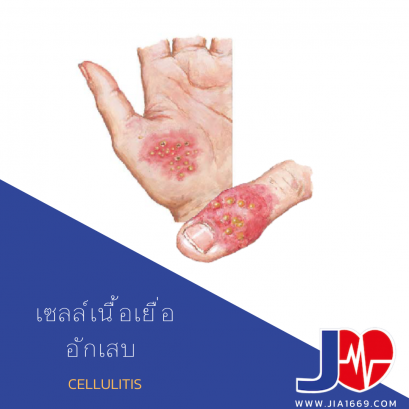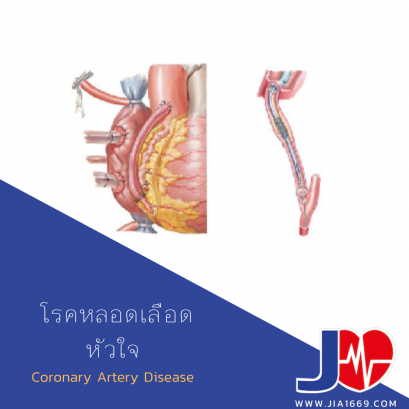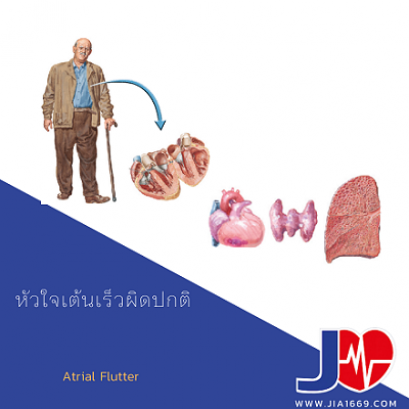When Sick
21 Sep 2022
Tetralogy of Fallot is a heart abnormality that occurs at birth (hereditary) the heart muscle with four chambers, the upper, left and right atria, and left and right ventricles. function to pump blood The interventricular septal septum Tetralogy of Fallot has four characteristics: (1) a ventricular septal defect (VSD); (2)
21 Sep 2022
It's also called Hansen's disease. Leprosy is an infectious disease primarily involving the skin and nerves. The number of cases has decreased worldwide. About 650,000 new cases are now diagnosed every year. Nearly three-quarters of leprosy cases occur. In India, Brazil, Bangladesh, Indonesia and Myanmar, about 150 new cases occur every year in the United States. Over 85% in the migration there are two types, paucibacillary and multibacillary.
21 Sep 2022
It is a lifelong irritating disease and inflammatory lesions of the blood vessels of the mouth, genitals, eyes, joints, skin, brain and nerves. This disease occurs when the immune system is overactive and attacks different parts of the body (an autoimmune disease). Behcet's syndrome occurs twice as often in men as in women and usually begins in early adulthood.
21 Sep 2022
Neurofibromatosis (NF) is a genetic disorder that primarily affects the growth of nerve cell tissue. This causes nerve tumors and skin and bone changes. There are two types of NF1 and NF2. NF1, also called von Recklinghausen's disease, is a rare disease that occurs in 1 out of 4000 people. It occurs in both men and women and is associated with tumors of the brain, eye, spinal cord, and blood cancers. some kind of white which has no cure
21 Sep 2022
Stasis dermatitis is a chronic inflammation (redness, swelling) and irritation of the skin. usually in the lower leg It is related to poor circulation of blood and lymph fluid. The fluid moves up slowly from the feet to the heart. It is common Occurring in middle-aged and elderly people
21 Sep 2022
Humans have two adrenal glands located above the kidneys. to make substances called hormones that regulate blood, pressure, fluid metabolism and other body functions It is an abnormal tumor of the adrenal gland. This type of tumor rarely occurs outside the adrenal glands. secretes a hormone called epinephrine or a related compound high blood pressure, palpitations, headaches and sweating
21 Sep 2022
Cellulitis is an infection in the skin and soft tissue layer below the skin surface. people with diabetes blood circulation problems And a weakened immune system can also develop cellulitis easily. People who have undergone medical procedures such as heart or lung surgery can cause cellulitis. Like farm workers or in the garden or the fisherman
18 Aug 2022
Cardiac tumors of the heart are non-cancerous. Tumors that begin in the lining of the heart and pushed into the chambers of the heart The heart has four chambers two atrium rooms two ventricle rooms and It pumps blood to the ventricle, where it compresses and pumps blood to the rest of the body. 90% of cardiac tumors of the heart occur in the atrium. Usually occurs on the left and on the top that separates the two sides of the heart Some heart tumors are flat. But many have thin stalks that are tied up, which allows them to move easily. Although heart tumors are rare, It is the most common tumor of the heart. They are first seen at an average age of 56. Women are twice as frequent as men.
18 Aug 2022
Poisonous animals in the ocean, including corals, jellyfish and sea nettles, sea urchins and starfish, stingrays, and dangerous fish, including lionfish, scorpionfish, and rockfish, release venom from bites or puncture wounds from thorns. People encounter these animals while diving or swimming in shallow water. contact is possible.
18 Aug 2022
Kaposi's sarcoma (KS) is a rare cancer of the blood or lymphatic tissues under the skin or mucous membrane (like the lip tissue). There are four types: epidemic, immunosuppression-related, classic, and African Epidemic. AIDS) Immunosuppression-related KS found in kidney transplant recipients. This requires strong drugs to suppress the immune system and prevent kidney rejection. This type of KS can be slow. and less severe. Classic KS is common in Jewish and Mediterranean men. Most survive for more than 10 years and die from something else. African KS is commonly seen in black male African children.
18 Aug 2022
Bed bugs are parasitic insects. A species called Cimex lectularius, also known as the common bed bug. Eat mammals and birds. Cimex hemipterus is a tropical bed bug that mostly bites humans. Both species feed on blood while sleeping. Bed bugs are attracted to carbon dioxide and their warmth. Adult bedbugs have no wings and are about a quarter inch long. often leave bite marks on the skin Bed bug saliva contains substances that cause skin reactions.
18 Aug 2022
It is an uncommon skin disease that is more common in women. It can also affect men and children. It is most common in postmenopausal women and in men aged 40 to 60. It usually occurs on the outside of the vagina in women. Men can be found on the head of the penis. It can affect the skin around the anus. Sometimes it occurs on the top of the body, chest and upper arms.
17 Aug 2022
People who smoke or have high blood pressure, diabetes, or high cholesterol are more likely to have a heart attack or myocardial infarction (MIs). In MIs, the heart muscle is injured or killed when it doesn't receive enough oxygenated blood because of the blood vessels. clogged
17 Aug 2022
It is a genetic disease that is mostly Affects the growth of nerve cell tissue. It causes nerve tumors and other disorders, such as skin changes and bone deformities. There are two types of occurrence: type 1 (NF1) and type 2 (NF2). NF2 is called bilateral acoustic neurofibromatosis. NF2 is uncommon, occurring in 1 in 33,000 people, affecting both men and women. and associated with brain tumors eye and spinal cord and some types of leukemia There is still a cure right now.
17 Aug 2022
The heart has only one function: to pump blood. The heart is made up of muscles that contract. Aqueous coating around the pericardium within the pericardium layer. This helps to keep the heart in the correct position and prevent it from moving too much or rubbing against other parts of the body. Stiffness is a condition in which the heart is filled with too much fluid in the pericardium. affects the pumping of blood Atrial fibrillation can be life-threatening. Immediate diagnosis and emergency treatment can save lives. Close supervision is imperative.
17 Aug 2022
Several types of electrical signals occur in the heart. The heart has two bundles to transmit electrical signals. The right and left sets have a signal sent to the right and left ventricles. The signal begins at the sinus node (sinoatrial or SA) of the heart and spreads through the upper chambers. to the core, and then to the branches A blocked heart electrical condition is This causes a delay in the transmission of these signals from the heart's upper atrium. These signals pass through the core of the heart but are blocked. This can affect either the left or right ventricle. The atria heart chambers contract normally. But the lower ventricle cannot receive signals at the same time. of shrinkage affected can't prevent The heart's electrical current can be blocked.
17 Aug 2022
poor circulation (also called Claudication) refers to leg pain caused by exercise and that improves with rest. Also called intermittent claudication, it's temporary leg pain. Peripheral vascular disease (PVD) and poor circulatory system The calf muscles are often affected, but the feet, thighs and buttocks can also be painful.
17 Aug 2022
The heart pumps oxygen-rich blood through arteries throughout the body. Blood carries oxygen and other nutrients that the body needs. coronary heart disease Caused by fat accumulation in the inner layer of coronary arteries. These blood cells are located outside the heart and carry blood to the heart, myocardium. These sebum deposits may build up during adolescence and gradually. thicker and larger throughout life This thickening, known as atherosclerosis (hardening of the arteries), narrows the arteries and can narrow or block blood flow to the heart.
17 Aug 2022
Deep vein thrombosis (DVT) is a disease that occurs when blood clots in a vein. The affected veins are usually deep in the leg muscles but can occur elsewhere. Blood clots slow down the flow of blood. The area becomes swollen, red, and painful if a blood clot moves to the lungs. Pulmonary embolism (pulmonary embolism) can lead to severe breathing problems. DVT often affects people who are not physically active, are elderly, pregnant, or have blood disorders that increase their risk of clotting.
17 Aug 2022
Enlarged myocardium is a disease of the heart muscle that protects the muscle from the force of its contraction. Therefore, the heart cannot pump enough blood to the organs in the body. The heart becomes weak and the four heart chambers become larger (dilated). These chambers are the atria and the ventricles of the heart. The muscles may thicken to give more force to contract to allow the blood to pump normally. Heart valves may be affected. When the chambers of the heart are enlarged This can worsen circulation. Impaired heart function can affect the lungs, liver, and other organs.
17 Aug 2022
Cholesterol is a type of fat or fat. Helps the body work better Cholesterol is created in the liver and carries fat into the bloodstream. In the body, cholesterol makes a protein-fat chemical called lipoprotein. Lipoproteins are grouped into VLDLs, LDLs, which are “bad cholesterol,” and high-density lipoproteins, HDLs, which are “good cholesterol,” help remove fat. From the bloodstream, higher HDL levels are better than VLDL and LDL can clog arteries, high levels of cholesterol, LDL and triglycerides. Fatty substances (fatty substances) increase the risk for hardening of the arteries. (atherosclerosis) and heart disease
17 Aug 2022
Blood pressure is the force that sends blood through the arteries from the heart c. Increased blood pressure puts a strain on your circulatory system. The blood pressure system is divided. It's two numbers, systolic pressure is the top number. and the diastolic pressure is the lower number. Both are recorded as mm Hg (millimeters of mercury), which indicates how high the mercury column is raised by the pressure. The systolic pressure is the highest pressure when the heart contracts. The diastolic pressure is the lowest pressure during contractions. Normal is 120/80. The American Heart Association defines adult hypertension as 140 mm Hg or higher systolic and/or 90mm Hg or diastolic higher.
17 Aug 2022
The mitral valve in the heart lies between the left atrium atrium. And the left ventricle opens when the atrium pumps blood into the chamber and closes when the ventricle pumps blood into the body. The closure prevents blood from returning to the atrium. Blood flows back into the atrium due to Leaky mitral valves Blood is not being pumped out of the heart properly. and the upper atrium cannot be filled in the next round. Blood may rush to the right side to the lungs. and fills the lungs with fluid The left ventricle has to do more work to move the blood. Later, it can cause heart failure.
17 Aug 2022
Pulmonary embolism (PE) is an emergency medical condition that occurs in the lungs as a result of a blockage in a vein. A thrombosis occurs when a blood clot breaks out of a vein (venous thrombus) in another part of the body. Usually in the legs and reaching the lungs, it can be life-threatening and requires urgent treatment.
17 Aug 2022
An aortic rupture is a life-threatening condition in which bleeding ruptures in the walls of the aorta and causes it to separate. The three walls are the inner, middle, and outer layers. The aorta is the largest artery and carries blood from the heart.
17 Aug 2022
It is a narrowing or blockage of the mitral valve located between the left atrium. The ventricle is the left ventricle (one of the upper chambers of the heart) and the left ventricle (one of the lower chambers in the heart).
26 May 2022
is a serious infectious disease caused by the variola virus. Variola virus is contagious. spread from one person to another People with smallpox develop a fever and an invasive skin rash. Most people with smallpox recover, but about 3 out of 10 people with the disease die. Many smallpox survivors have permanent scars on various parts of their bodies, especially their faces. and some are blind
26 May 2022
chickenpox (also called varicella) is a highly contagious virus. Diseases that affect the skin and mucous membranes Most cases occur in young people, most often in children 2 to 8. In adults, the illness is more severe and lasts longer.
26 May 2022
The atrium is the top chamber of the heart. The ventricular ventricle is the lower chamber. In the atrial flutter, it begins to beat rapidly due to excessive abnormal electrical impulses. The atrium tries to shrink. But the contractions that are too fast can be up to 300 beats per minute, instead of 60 to 100. Atrial flutter is more common in older people. mostly men





























